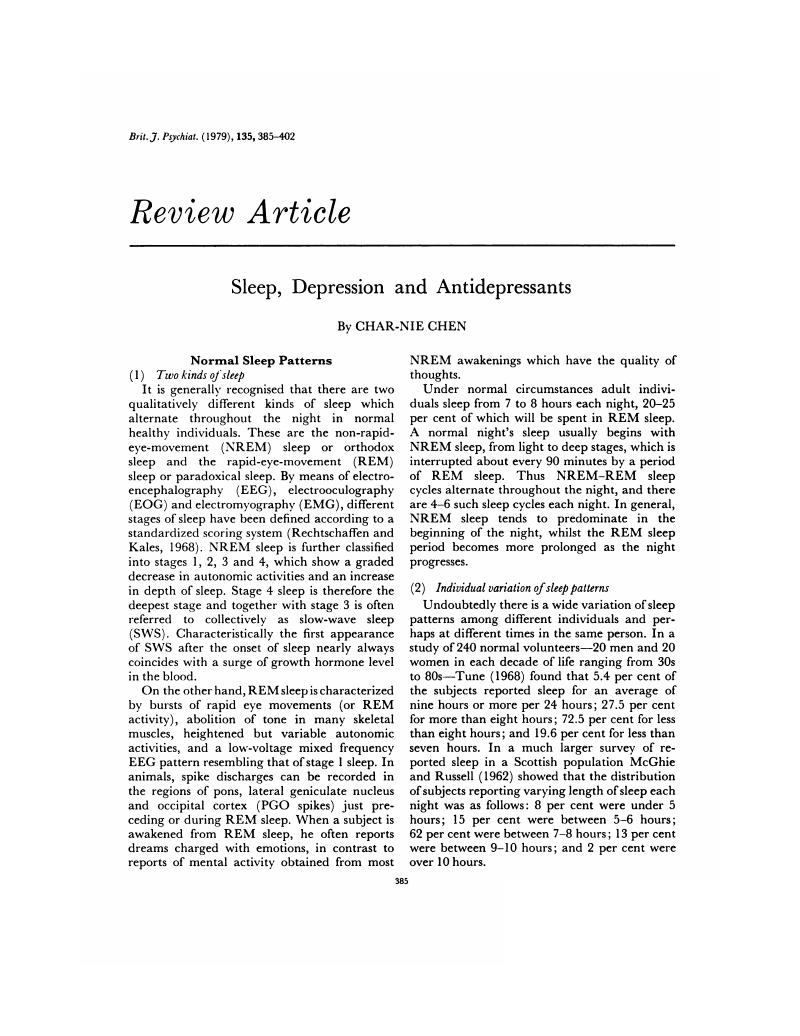Crossref Citations
This article has been cited by the following publications. This list is generated based on data provided by Crossref.
MACFIE, CRAIGIE
1980.
PSYCHIATRY.
Medical Journal of Australia,
Vol. 1,
Issue. 9,
p.
405.
Pinder, Roger M.
1980.
Vol. 15,
Issue. ,
p.
1.
Hemmingsen, R.
and
Rafaelsen, O. J.
1980.
Hypnagogic and hypnopompic hallucinations during amitriptyline treatment.
Acta Psychiatrica Scandinavica,
Vol. 62,
Issue. 4,
p.
364.
Fawcett, Jan
1980.
Depression at the Biochemical Level.
Psychiatric Annals,
Vol. 10,
Issue. 9,
Fisch, Hans-Ueli
Hammond, Kenneth R.
Joyce, C. R. B.
and
O'Reilly, Michael
1981.
An Experimental Study of the Clinical Judgment of General Physicians in Evaluating and Prescribing for Depression.
British Journal of Psychiatry,
Vol. 138,
Issue. 2,
p.
100.
Pauker, Neil E
1981.
Trimipramine: A Safe, Effective Antidepressant.
Psychiatric Annals,
Vol. 11,
Issue. 11,
p.
18.
Murray, John B.
1982.
Trends in Research and Treatment of Affective Disorders.
Psychological Reports,
Vol. 51,
Issue. 3_suppl,
p.
1287.
Taub, John M.
1982.
Sleep Pattern Variations as a Function of Age in Affective Disorders.
International Journal of Neuroscience,
Vol. 17,
Issue. 4,
p.
219.
Paioni, R.
Waldmeier, P.
Delini-Stula, A.
Langer, G.
Schönbeck, G.
and
Beckmann, H.
1983.
Psychopharmaka.
p.
57.
Kupfer, David J.
and
Thase, Michael E.
1983.
The Use of the Sleep Laboratory in the Diagnosis of Affective Disorders.
Psychiatric Clinics of North America,
Vol. 6,
Issue. 1,
p.
3.
Taub, John M.
1984.
Individual Variations in the Sleep of Depression.
International Journal of Neuroscience,
Vol. 23,
Issue. 4,
p.
269.
Insel, Thomas R.
Mueller, Edward A.
Gillin, J.Christian
Siever, Larry J.
and
Murphy, Dennis L.
1984.
Biological markers in obsessive-compulsive and affective disorders.
Journal of Psychiatric Research,
Vol. 18,
Issue. 4,
p.
407.
Mendlewicz, J.
Dunbar, G. C.
and
Hoffman, G.
1985.
Changes in sleep EEG architecture during the treatment of depressed patients with mianserin.
Acta Psychiatrica Scandinavica,
Vol. 72,
Issue. s320,
p.
26.
Bowden, Charles L.
1985.
Current Treatment of Depression.
Psychiatric Services,
Vol. 36,
Issue. 11,
p.
1192.
Kerkhofs, M.
Hoffmann, G.
De Martelaere, V.
Linkowski, P.
and
Mendlewicz, J.
1985.
Sleep EEG recordings in depressive disorders.
Journal of Affective Disorders,
Vol. 9,
Issue. 1,
p.
47.
Ankier, Stephen I.
1986.
Vol. 23,
Issue. ,
p.
121.
Höchli, Dominique
Riemann, Dieter
Zulley, Jürgen
and
Berger, Mathias
1986.
Initial REM sleep suppression by clomipramine: A prognostic tool for treatment response in patients with a major depressive disorder.
Biological Psychiatry,
Vol. 21,
Issue. 12,
p.
1217.
Kerkhofs, Myriam
Missa, Jean-Noël
and
Mendlewicz, Julien
1986.
Sleep electroencephalographic measures in primary major depressive disorder: Distinction between DST suppressor and nonsuppressor patients.
Biological Psychiatry,
Vol. 21,
Issue. 2,
p.
228.
Wilson, William H.
Ban, Thomas
Coleman, Bernard
Vause, Beth
and
Papadatos, John
1986.
The effects of clovoxamine on sleep of normal volunteers: A double‐blind placebo‐controlled study.
Drug Development Research,
Vol. 9,
Issue. 4,
p.
293.
Steiger, Axel
Holsboer, Florian
and
Benkert, Otto
1987.
Dissociation of REM sleep and nocturnal penile tumescence in volunteers treated with brofaremine.
Psychiatry Research,
Vol. 20,
Issue. 2,
p.
177.




eLetters
No eLetters have been published for this article.